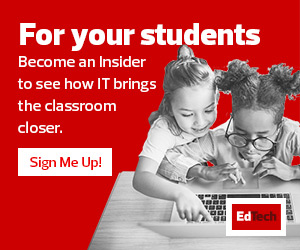What Is Personalized Learning?
Personalized learning is an educational model in which instruction meets individual students’ needs and learning styles. There are different forms of personalized learning, many of which are made easier with the introduction of educational technology. According to ISTE, “It is the purposeful design of blended instruction to combine face-to-face teaching, technology-assisted instruction and student-to-student collaboration to leverage each student’s interests for deeper learning.”
Personalized classroom experiences may remedy some of the learning loss that occurred during the COVID-19 pandemic. Results from the National Assessment of Educational Progress, administered in 2022, showed math scores for some grades had fallen to lows not seen in more than two decades. Across the board, more students scored below basic grade and subject proficiency levels.
Tech Solutions Help Teachers Pinpoint Proficiency Status
At Quest Academy, students’ math instruction includes a customized version of an online credit course. The program features videos and high-level depth-of-knowledge questions to confirm they understand the material, potentially followed by students working out problems on whiteboard tables, Slaugh says.
A separate adaptive literacy platform rates students’ reading and vocabulary comprehension. This helps teachers identify which students need further support through diagnostic profiles and assessment-based midyear and end-of-year benchmarking capabilities.
DIVE DEEPER: Improve K–12 literacy with next-gen reading tools.
“We’re big on data,” Slaugh says. “We have a variety of resources for instant feedback for formative assessment throughout class. Our teachers are constantly identifying where the kids are in the learning process and deciding what kids need more assistance on.”
The personalized, data-centric approach aligns with a number of educational elements that parents prioritize. According to a survey from the Walton Family Foundation, Stand Together Trust and Tyton Partners consultancy, 47 percent of K–12 parents say one of their main goals for their child’s education is that schools provide a learning environment that best matches their child’s needs.
Personalized academic support and programming based on students’ interests are the top elements parents value when considering alternative school options. Those are followed by more progressive and innovative learning strategies, such as performance-based assessment.
Students’ Interests and Expertise Guide Class Projects
Tech solutions have helped Milton Hershey School, a private K–12 institution in Hershey, Pa., adjust its curriculum. The school’s coding class was updated for students who have previous experience with the topic or plan to pursue a career in the field, says Rachael Mann, director of career and technical education.
“The teacher is able to have some of her more advanced students choose different topics to go a little bit deeper with coding principles,” Mann says. “Some of them are doing app development, but they also do some work with educational robotics.”
Frank Komykoski, who provides engineering instruction, has asked sophomores and juniors to design seemingly unnecessary inventions, from the brainstorming and prototyping phase to testing their creations.











